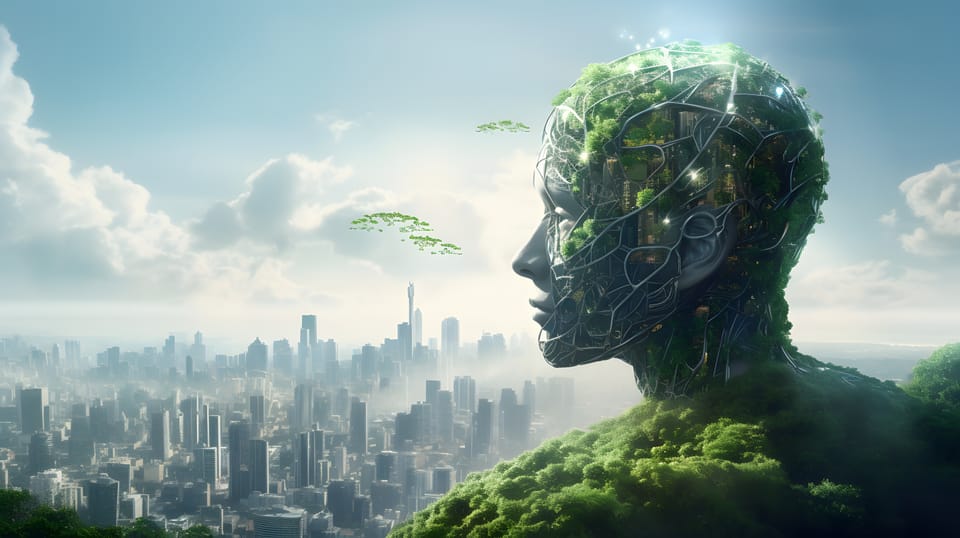It’s time to focus on AI education, not doomsday scenarios

It’s time to put artificial intelligence (AI) doomsday scenarios to bed.
Nightmarish situations where AI finally gets the upper hand on humans, destroying financial markets, launching nuclear warheads en mass, and relegating the survivors to shackles are best left to fiction writers to contemplate.
But these discussions persist and dominate public discourse driven by commentary from influential cultural figures like Elon Musk, who continues to sound the alarm on the AI threat.
The threat of AI is real, but conversations among governments and industry must shift from the apocalyptic to the practical; policymakers and leaders in the private sector should focus on ensuring the entire workforce, not just an elite subset, is prepared to work with and master AI.
The economic benefits of AI should not be concentrated in the hands of a few. However, depending on how AI legislation and regulation are developed and implemented, this may end up being the case. An article in the Economist recently pointed out that tech giants want to strangle AI with red tape to hold back open-source competition.
With the ability to strangle the competition, big firms will quickly take control of how AI technology is developed, deployed, and used. A limited number of firms' control of AI technology may give them significant influence over labor markets, potentially affecting capital distribution, wages, and working conditions. A scenario like this could contribute to the growing class divide, which is quickly becoming unbridgeable.
Governments around the world are ushering in legislative frameworks (many half-baked) to ensure vulnerable populations are protected from racist algorithms, bad ethics, and biases. And while these issues are important, policymakers must also pay attention to workforce education and how to ensure AI education and training are available to all people via the public education system, not just those who can afford it.
Humans have been battling against labor-saving technology for hundreds of years. Education and training remain the fundamental components of ensuring human labor and ideas remain relevant and valuable in the face of technological change. In other words, regulating the competition into submission is not a long-term, viable solution.
In the 1700s, the spinning jenny revolutionized weaving, allowing more threads and yarns to be produced by fewer spinners. The machine had a profound impact on the textile industry and jobs because of its ability to increase productivity while reducing labor costs.
Workers, especially skilled spinners, had to learn how to operate and maintain the new spinning machines. These machines required a different set of skills than traditional hand spinning, but many workers successfully transitioned to the new paradigm by acquiring new skills. Those who didn’t have the resources or will to adapt were left behind or had to find jobs requiring less skill.
This scenario has played out many times over the past 100 years. Personal computers and office productivity software automated administrative and clerical tasks previously done manually. And while some jobs were eliminated or diminished, many markets expanded due to improved technology, resulting in more jobs and economic benefits. The public education system adapted, providing workers with new training and programs to ensure they had the skills to master the latest tools being churned out by industry.
Once again, we’re witnessing a technological shift with the rapid advancement of AI; however, this time, the stakes have been raised. AI is a different breed of technology that may one day have the ability to think freely. While the spinning jenny and personal computers required a human at the helm to operate the technology, AI can operate independently of humans. AI won’t just eliminate a step in the production line; it may eliminate the whole thing.
High-skilled workers, especially those in STEM fields, have less to worry about regarding the adoption of AI by big business; the research finds that these workers tend to adapt quickly to technological changes and reap the benefits of new technologies. Additionally, high-skilled workers have the resources to purchase education and skills training, whereas middle and low-skilled workers typically do not. Indeed, middle and low-skilled workers have less promising outcomes.
While AI is a unique technology with the potential to change the labor markets dramatically, the key to ensuring humans remain competitive and in control of AI remains the same: enhanced, comprehensive education and skills training across the public education system.
The public and private sectors must work together to provide new and existing middle and low-skilled workers with education, training, and incentives to encourage them to upskill. Battling worker apathy is one challenge governments and industry may face as some segments of the workforce may already feel helpless approaching and learning about complex technology. Students must also be exposed to AI education at a young age and throughout their educational journey.
Countries like Finland, China, and the United Kingdom have been actively promoting AI education in high schools, with specialized programs in AI being offered to interested students. This approach makes sense, and other countries and governments should take notice.
Establishing and funding centralized training organizations may help ensure a coordinated, national approach to AI training in elementary and high schools, ensuring teachers and administrators have resources and guidance on preparing students for working with AI.
These organizations could work across countries with states and provinces to ensure that AI training and education standards are being met and that end users, students, have access to resources to develop proficiency with AI technology and tools.
In sum, the goal is to democratize AI training and education to ensure all individuals have a chance to learn about and work with AI. Democratizing AI education and training will help ensure that the economic benefits of AI aren’t concentrated in the hands of the administrative and industrial elite, which most certainly negatively contribute to the growing class divide.
Together, governments and leaders in industry worldwide will play a key role in ensuring appropriate access to high-quality AI education and preparing the workforce for a world that, one day, could be heavily influenced by AI.
